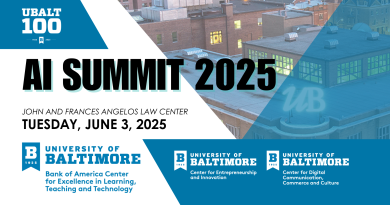What Does a Library 2.0 Look Like?
Once quiet havens for book storage and solitary study, university libraries are transforming into vibrant, tech-rich centers of learning. RLB faculty and staff at UBalt are keenly observing how other universities worldwide are reshaping their libraries to meet modern demands, turning them into multifaceted spaces for knowledge and collaboration.
In the digital era, libraries are rapidly adapting to meet the evolving needs of digitally savvy students and the fast pace of technological advancements. Erin L. Ellis from the Association of College and Research Libraries captures this transformation, stating, “Academic libraries are keeping pace with technological change the best they can.” Parallel to these technological shifts, the roles of librarians are also undergoing significant changes. Anna França from Edge Hill University highlights this transition, noting that librarians are moving beyond traditional support roles to become more actively involved in various academic activities. In an age characterized by information overload, librarians are emerging as vital guides, adept at helping users navigate and make the most of digital resources and technologies.
In the evolving landscape of university libraries, the fusion of technology with conventional library services is increasingly evident. The University of Arizona’s Student Success District and the University of New Mexico’s Adobe Creative Commons are prime examples, each showcasing significant investment in integrating library services with technological innovation and support for digital creativity. Likewise, the British Library’s ‘Single Digital Presence’ initiative represents an international effort to unify digital platforms, connecting users to a broad spectrum of local and national resources. This trend is further underscored by advancements across the UK, where the introduction of RFID self-service kiosks, dedicated library apps, and the utilization of Artificial Intelligence in audiobook narration are making library services more accessible and inclusive. Moreover, the adoption of Virtual Reality for practical training and the establishment of ‘Zoom rooms’ for videoconferencing are testaments to how libraries are adapting their physical spaces to accommodate the growing demand for digital collaboration and interaction.
Developing a Library 2.0 is a multifaceted challenge, encompassing more than just technological upgrades. It involves navigating budget constraints and staying abreast of rapid tech advancements, all while ensuring environmental sustainability and accessibility. Meeting these varied needs requires a delicate balance, as libraries strive to remain at the cutting edge of information technology and service, without compromising on their responsibility to be inclusive, environmentally conscious, and responsive to the unique demands of their community. At RLB Library, this balance is at the forefront of our strategy as we seek to redefine our role in academia and the broader UBalt community.
A recent RLB staff retreat using design thinking principles has set the stage for our future. This retreat helped define our goals and brainstorm ways to bring them to fruition. We’re looking at what we currently offer, identifying areas of growth, and setting our sights on innovations that align with our community’s unique needs. This includes enhancing digital literacy, expanding access to a variety of media and technology, and reimagining our spaces to foster collaboration and creativity.
The concept of Library 2.0 is more than just a tech upgrade. It’s a shift in how knowledge is accessed and shared. These evolving spaces are crucial for learning, innovation, and community engagement, expanding well beyond traditional library services. At RLB Library, we’re embracing this shift, charting a course to be at the forefront of this transformation, and ensuring that our services remain relevant and valuable to the UBalt community. If you’d like to join this conversation as well, please share your thoughts with us using this link.


